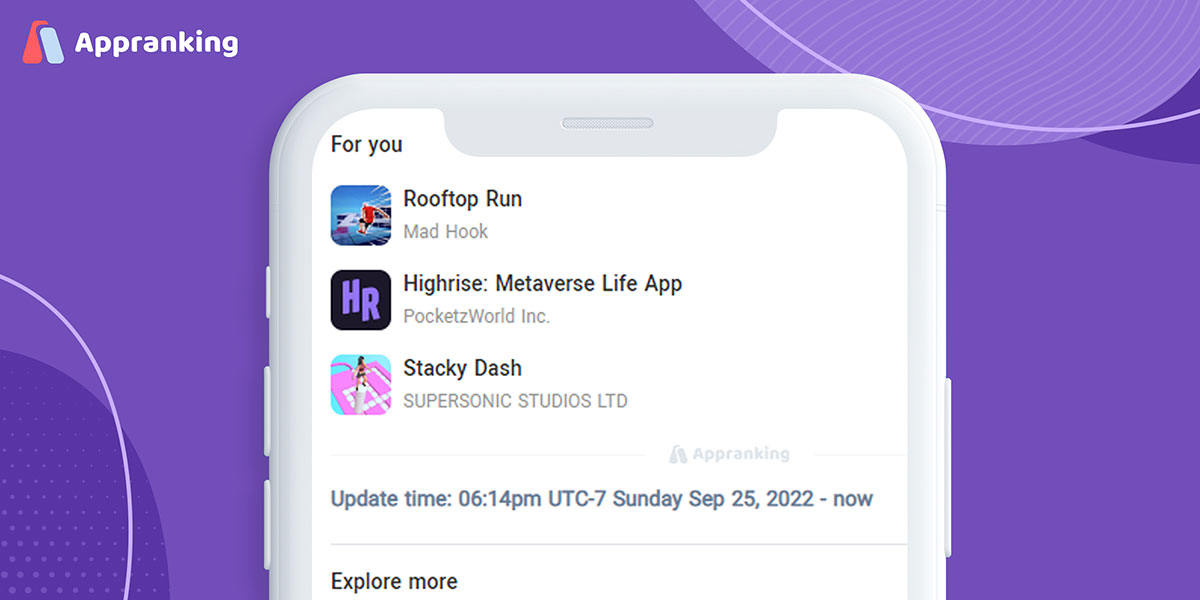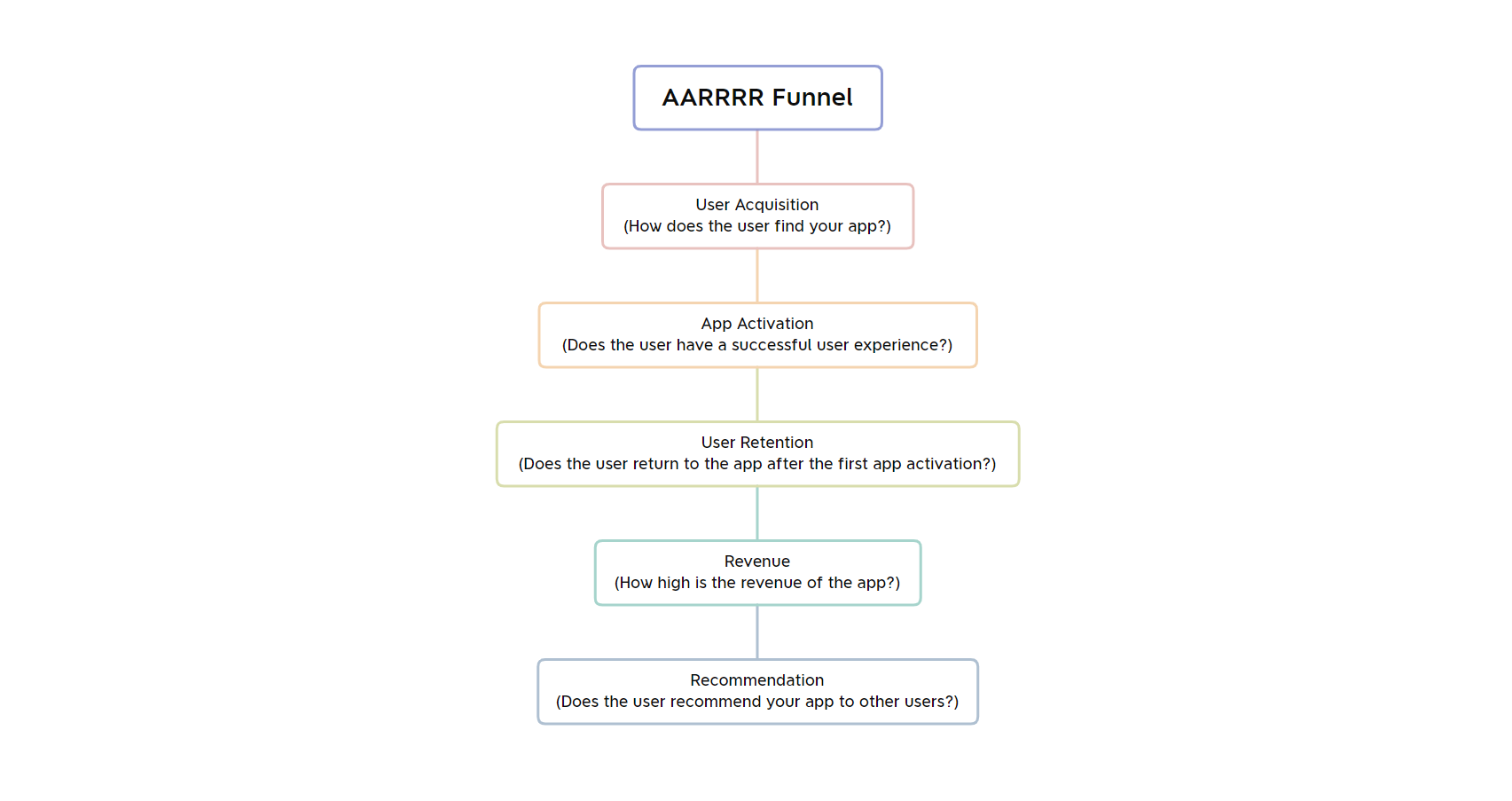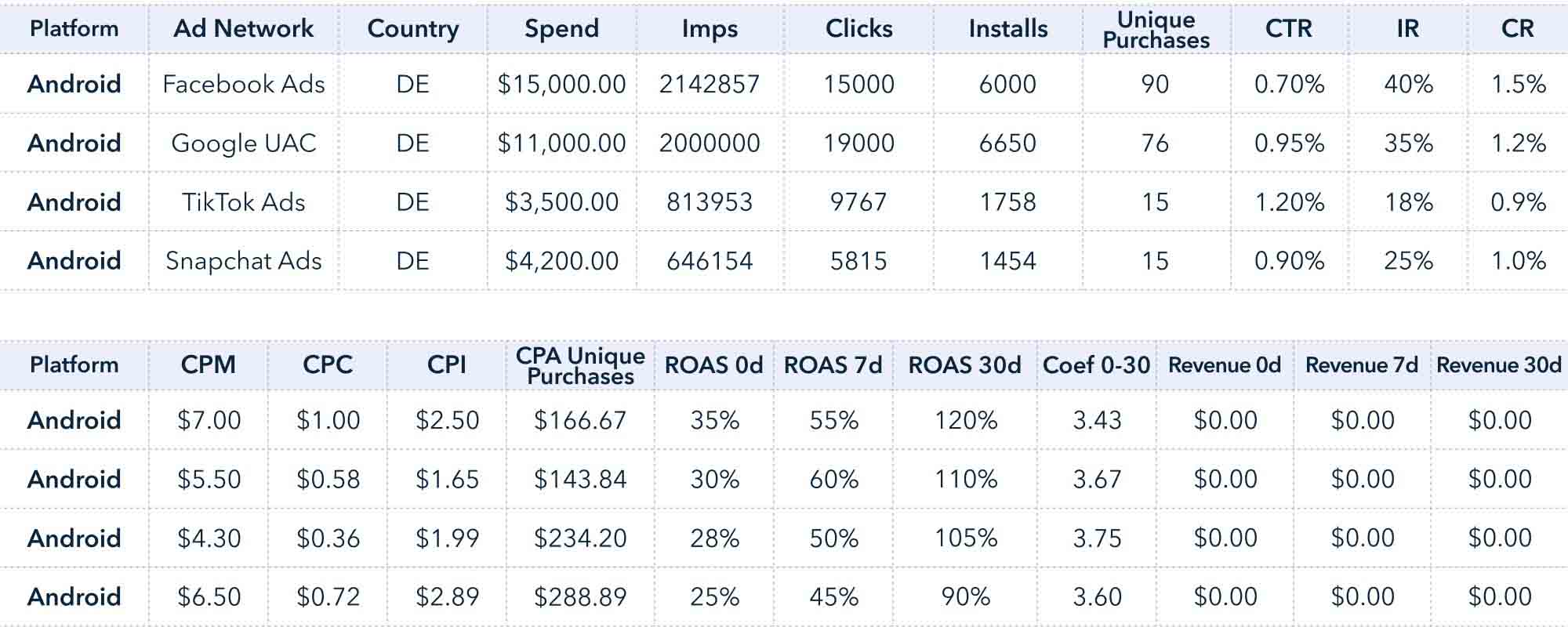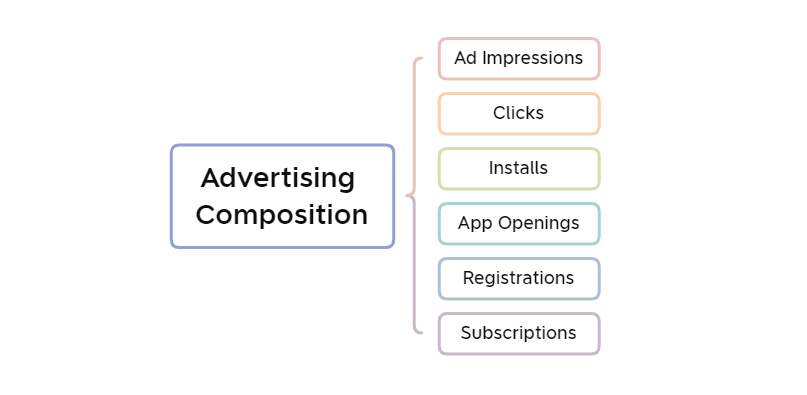
We have to understand why they are churning, where they are likely to go, and why the others stay. In addition to this, we must understand why the app has a low conversion rate, a low ROI or a negative store rating, etc.
That's why it's especially important to frequently review and audit our marketing campaigns and data.
What is a marketing funnel?
A mobile app marketing funnel is the route taken from attracting new users to having them carry out a desired action or suggest the app to other users. Most app marketers take the following funnel:
An app marketing audit identifies the bottlenecks in the funnel as well as the weak and strong parts of your product's marketing strategy. What needs to be fixed in order for the conversion to flow easily down the funnel. According to measurements and figures, the funnel of an abstract mobile application looks like this:

The funnel shows that:
- This game is for mobilephones.
- It is made available for Android users.
- In-app purchases are how it is made profitable.
- Germany is the target country for their ads.
- The app uses 4 sources of traffic.
- ROAS at day 30 is the KPI.
Click-Through Rate — When you test out various ad creatives and fresh audiences, the click-through rate increases;
Install Per Rate and Cost — The same as above;
Average Revenue Per User, Average Revenue Per Paying User, Return On Ad Spend, Conversion Rate, and Cost Per Action — They are metrics that can be affected by improving ad creatives, finding new audiences, and other campaign optimization techniques. There are other subtleties at play here: various creatives have varying conversion rates and payoffs. The types of campaign optimizations are the same.
Buying settings allow us to clearly identify what has to be adjusted in order to eliminate funnel bottlenecks. Here are some instances:
- The biggest part of the traffic in campaigns goes to Germany, but at the same time, we know that traffic pays off better in let’s say France — there is higher ARPU and conversion into a purchase rate.
- There are different payback rates for different placements in ad platforms. Therefore, it is worth doing a grouping within each traffic source by placements. According to them, it is also necessary to analyze the cost of the funnel.
- Video creatives normally get less traffic than static ones. However, static creatives’ conversion rates are on average 3 times worse than videos. In this case, it is worth correcting the proportion of both types of creatives.
- The wide audience does not differ from look-alike (LAL) in terms of ARPU, while the CPI for the LAL audience is higher. You just need to stop narrowing your audience with look-alikes and start running campaigns with a wide audience.
What are the parameters?
Set of options in traffic acquisition
We evaluate your user acquisition campaigns through the ad account to see whether they are properly set up, if they perform well in comparison to benchmarks, and if the creative approach you have chosen is "viable".Product metrics
Product metrics enable us to establish growth points for effective user acquisition, assess the present and potential payback of a project, and choose the most appropriate traffic sources. Typically, we use a tracker for this.We occasionally use use product analytics for mobile initiatives, such as through Amplitude. Regarding web products, Google Analytics and bespoke solutions analysis based on client uploads are the two finest approaches to track and analyze.
We reach the following conclusions in light of the findings of the analysis of option settings and product metrics:
- Calculating the product's extended payback period. Additionally, provide suggestions for its development.
- Putting together a scaling plan.
- Offering a plan of action to fix problems with your user acquisition approach.
What exactly is analyzed?
There are many elements worth analyzing in the general audit process.Advertising composition
The top of the funnel regarding the GEOs involved and optimization types deserve our attention. For this, we should consider the CPM, CPC, CTR, IR, CPI, and IPM measures in this regard.Additionally, we must thoroughly examine the ad campaign settings, including audience, placements, optimization, and bidding strategy. We also need to evaluate the effectiveness of the text bubbles and assumptions utilized in the creatives in relation to your application.

Tracker
At this stage, we should go through the product metrics: ARPU, ARPPU, Retention rate, Conversion Rate, Revenue, ROAS and ROI by day.We also need to take a look at the map, where the tracker events are compared with the events of the ad platforms (event mapping). Besides, we also should examine the correctness of the attribution settings and integrations of the ad platforms.
Other things you need to keep in mind
The length of the audit period is greatly influenced by how much user acquisition work you have already completed. The audit will take longer if you've used more ad channels and have larger campaigns.The audit normally takes 1-2 business days. This is sufficient to evaluate the project, thoroughly examine the ad accounts and the tracker, combine data from the tracker and ad platforms, produce test recommendations, identify faults, and offer feedback on the creative plan.
The above is an easy guide for app marketers to actively review their campaigns so that they can identify problems and fix them in time.
But if you don't want to do it yourself, you can use Appranking, an integrated website that provides a one-stop shop to show you how your app is doing through a clear and concise dashboard. We can also provide professional app intelligence to help you with your app promotion.
Empower your team with our App Marketing Intelligence
Free forever. Cancel anytime.


